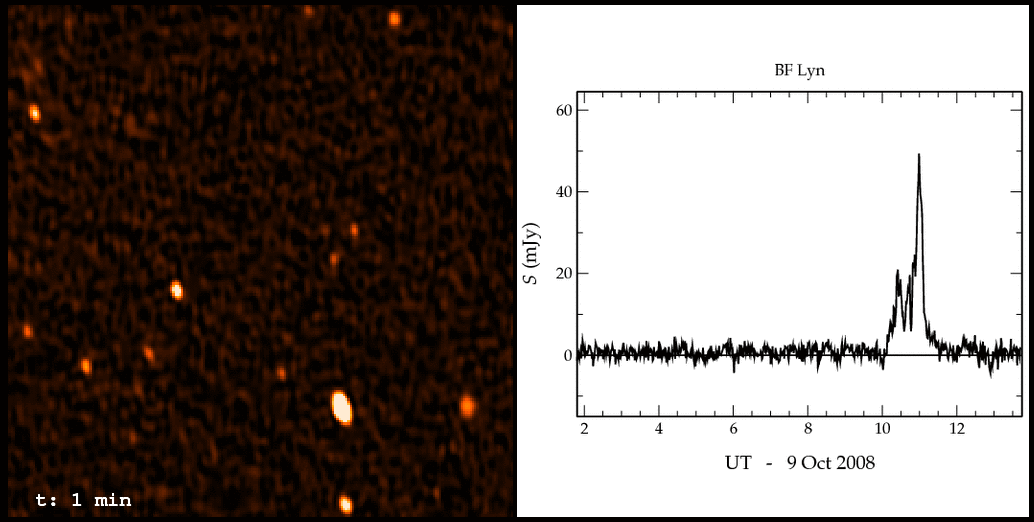Daily Image
27-11-2009Twinkle twinkle little star
| Submitter: | Tom Oosterloo & Paolo Serra |
| Description: | Our standard perception of the night sky is that it is static. If there are any changes, we unknowingly assume that they occur very slowly, not measurable on human timescales. However, the real sky is probably very different. The fact that we think changes on the sky are very slow is related to the way we look at the sky. Telescopes observe only a small part of the sky and the only way to spot a sudden event in that little patch is to be very lucky. Perhaps the biggest promise of Lofar and Apertif is that they may change the way we think about the sky. Because these instruments have a much larger field of view, the probability they see something happening is much larger. No doubt these telescopes will discover all kinds of new and unexpected transient radio sources. The radio sky will become dynamic.... Nevertheless, the WSRT recently did spot a strange event. In an observation, done by Serra, Morganti & Oosterloo and aimed to detect the neutral hydrogen in a distant galaxy, unexpectedly a new source appeared, and, in fact, disappeared after about 90 minutes. The movie shows this event and the plot shows the brightness of the object over a 12-hour period. It turns out to be a nearby star, called BF Lyn, that experienced a strong burst, similar (but much much stronger) to those that occur on our Sun. It occurs only very rarely that the WSRT observes such an outburst, about once every decade. In contrast, Lofar and Apertif will observe such events much more often. The detection of this radio transient by the WSRT is perhaps the forebode of many more to be detected by Lofar and Apertif. It is obvious that this will lead to a lot of new astronomy. |
| Copyright: | Astron |
| Tweet |  |
